-
Posts
1,621 -
Joined
-
Last visited
Content Type
Profiles
Forums
Gallery
Events
Posts posted by SJSoane
-
-
Michael, the further you go, the more confused I am about the mechanics of the engine, and the more impressed I am by your machining skills!
Mark
-
Thanks, Siggi and druxey. This has been a steep learning curve, working with metal casting.
Part of the challenge is that I have been unable to use an open flame propane torch in my shop to heat the metal. So I had to dig into the bullet casting hobby sites to learn about electric melters. The Lee melter is not terribly expensive, and appears to work well.
Mark
-
Hi everyone,
A long time away from the shop; pesky real work gets in the way...
I am zeroing in on these cannon. I think my sludge problem was from using an electric melting pot with a cast iron ladle; somehow the cast iron polluted the pewter. So I switched to a Lee bottom pour melting pot, and it works very well. No sludge, no dross to skim off the top.
I have also learned to leave the pour in the mould for maybe 5 minutes. Pulling it earlier leaves small pockets in the cast where the metal pulls away from the mould before it is fully solidified. the photo of the cast cannon also shows that I changed my gunhead to look something more like the 18th century engravings showing gun casting. I don't know if it makes any difference, but it saves the amount of pewter I pour.
I built a little collar to clamp the cannon in the lathe for cleaning up the muzzle and drilling the bore. I am showing how I clamp the extension of the bore from the cast into a small Jacobs chuck, to ensure the muzzle is centered in the lathe.
And a few shots of the red carriages starting to line up. The jig shows the tedious masking on the carriage parts to ensure a clean glue surface.
Mark
- Wintergreen, druxey, daHeld73 and 9 others
-
 12
12
-
Hi Michael,
I just had a chance to look in after a prolonged bout of work. Looks great!
Mark
-
Siggi,
I can't help with the cannon location, but I can say that those cannon look great! I now have great respect for the amount of work that goes into an accurately detailed cannon and carriage. They look great against the light deck and the red bulwarks.
Mark
-
Astonishing, Michael. I would never have believed this to be possible.
Your comment about the 1/4" drilling a tiny bit oversize raises a question for me. I have noted that many of my little drills are a smidgen under their stated nominal size. Is this to account for runout, wander, etc., so the final hole size is as expected?
Mark
-
-
Now that I am having to remake my mould, I have a few thoughts about making it better:
The first thing I notice is that the rubber flexes enough when putting plaster around it to allow the end of the barrel to come out a little oblong. Ed Tosti, you advised me, and I regret I didn't follow your advice, to use the 10:1 rubber RTV from MicroMark. Would it perhaps be less squishy than the 1:1 Rapid that I used, and therefore hold its shape a little better?
And/or, perhaps I should leave the master inside the RTV mould when pouring the plaster around it. That would keep it from squishing.
I also wonder about the pewter I bought locally. It has a downright nasty scum on the surface when it cools (see photo). Does anyone have a suggestion for an online supplier for reliable metal?
Mark
-
Hi druxey,
I skimmed the dross each time, showing the shiny metal. But in the time it took me to put down a skimming tool and pick up the ladle and pour, oxidation was already forming again.
The sludge is surprisingly sticky, like it was beginning to break down the surface of the rubber.
Mark
-
Hi everyone,
Ah, a short-lived victory. I started casting more cannon today, and the further along I went, the worse the castings. They were starting to lose detail (see first photo). I looked more carefully, and a sticky brown sludge was building up on my mould (see the third picture, where I scraped some of it off). And then when I was trying to clean the mould, part of it ripped away at the muzzle face. So, time to make a new mould...
I really wonder if the pewter metal I obtained at a local jewelry supply store was too hot for the rubber mould material. So, I either need to switch to stronger mould material, or find softer metal, perhaps at MicroMark. Or, switch to resin. The learning curve continues.....
Before all of this emerged, I started the day building a successful jig (shown being set up in photo 2), to make a wooden collar with an inside diameter tapered to match the taper of the barrels, so I could chuck the cannon in the lathe for cleaning up the front face and drilling the bore. I cut the inside taper by putting the rotating table on the angle table, and then rotating the blank past a mill cutter inside the hole. It worked really well on a trial; I just have no cannon at this point to use it with!
Mark
- archjofo, tadheus, harvey1847 and 5 others
-
 8
8
-
Hi everyone,
Well, I finally cast some pewter cannon. Or one, to be exact. It is finished with Jax Pewter Black which appears to work very well. I mechanically cleaned the barrel after casting, with a 3M spider abrader, and then a dip in jeweler's pickle, a rinse in water, and then Jax brushed on. I will live with it for a while; I think it might want some final finish to give it a tiny bit more sheen. It is dead flat black right now. A mean looking cast iron monster....
And thanks, David and Michael, for ideas about how to mount these with spacers. That will be my next challenge.
Mark
- Wintergreen, tadheus, mtaylor and 11 others
-
 14
14
-
You can see my reconstruction of this partner at this site:
This is based on the drawing of the partners on my Admiralty prints of the gundeck for the Bellona. I believe the capstan would have been lifted up from above, the parts of the partners taken away, and then the capstan dropped down one deck. Presumably the partners from one deck above would then be fitted in this opening to make the two capstan operational on two decks.
Mark
-
Gaetan, the calibration of monitor to printer as you show it here is impressive. I have always had difficulties with this.
Mark
-
Perhaps early days for thinking about this, but I am beginning to wonder how I am going to attach the carriages to the deck, and the cannon to the carriages at a set angle.
Since I am not planking the deck, I will need to put spacers under the wheels 4" thick to lift them to the correct height relative to the gunports. And how do I pin them down, rather than relying on glue alone? I can see, with the weight of the pewter cannon, how these might break free over time. Pins all the way through the wheels seems challenging.
And how do I fasten the cannon down onto the quoins parallel to the deck? I could glue the cannon to the quoins with epoxy, but will this come loose over time without a pin?
More construction details to ponder! Any thoughts?
Mark
-
Hi Mark,
It is a few drops of TransTint Bright Red dye, mixed into General Finishes Gel Topcoat wipe on urethane. I got both at Rocklers Woodworking. Ed Tosti has warned that this may be transient and fade over time, but I decided that faded red would be better than way too intense red paint. I had to throw away my first riding bitts when I painted them and hated the look.
Mark
-
Another huge source of comfort is to read in Rob Napier's book, The Legacy of a Ship Model: Examining HMS Princess Royal", how the 18th century model makers made mistakes, sometimes small and sometimes very big! Realizing that took a lot of pressure off, no longer looking for perfection that even the masters could not achieve.
Mark
-
Michael, all the best for you and your wife. Family matters most of all.
Mark
-
Siggi,
A fast build, just three years! And looking very good. It is good to know that the capstan bars are stored between the beams. I like your rack for storing them.
Mark
-
Hi Michael, thanks for the thoughts on holding it on pins. With paint it might work, but with stain I have to put a cloth on every surface and wipe it off. It is challenging. In the end, I had to mask each piece, and hold it while staining, then wiping. Tedious, but here are the first results. Ironwork still to come,, and I look forward to seeing the darkened pewter for cannon rather than the resin and brass seen here.
Mark
- Timmo, dvm27, sonicmcdude and 11 others
-
 14
14
-
-
Thanks, bizibilder, I will try that on the gun carriages for the upper deck.
I managed to cast a plaster holder for my gun mould as recommended in David Antscherl's Fully Framed Model vol. II. I now see the wisdom of that approach, after having my first pour spill out of the mould when the rubber bands burst. After the plaster dries, time to try melting some metal again.
I also built a little jig for assembling the gun carriages. I haven't decided yet if I will stain each piece and then assemble, or assemble and then stain. Masking each part for separate staining in tedious, and I have no place to hold each piece when staining it all over, without putting my fingers in the fresh stain. But it is also difficult to get the stain into each nook and cranny when it is already assembled. I already tried it the first way, and I'll try it the second way tomorrow, and see what happens.
Mark
- AON, Stuntflyer, Mark P and 11 others
-
 14
14
-
Gaetan,
Your cherry copy is spectacular! You are clearly a gifted artist.
Mark
-
-
Wonderful animation!
Mark



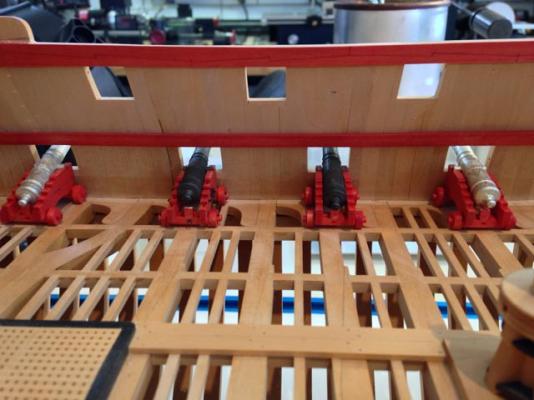
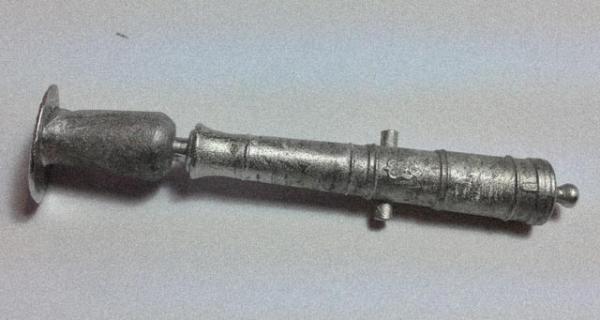
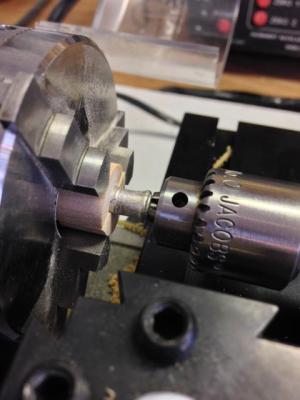
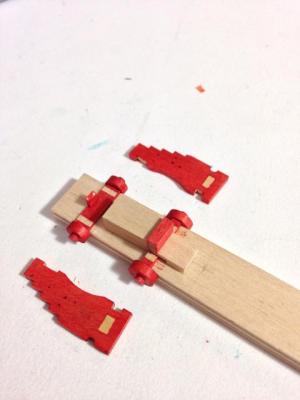
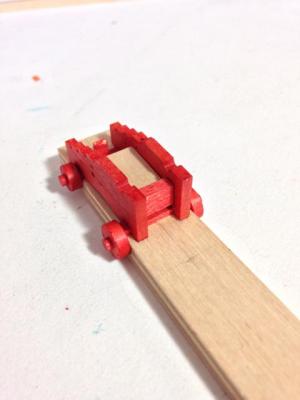
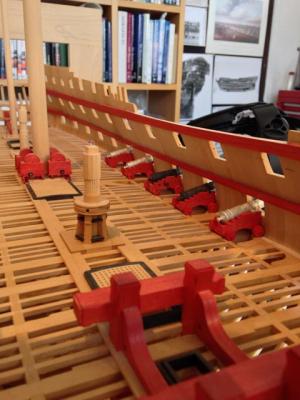
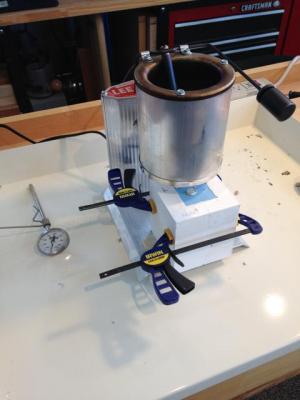
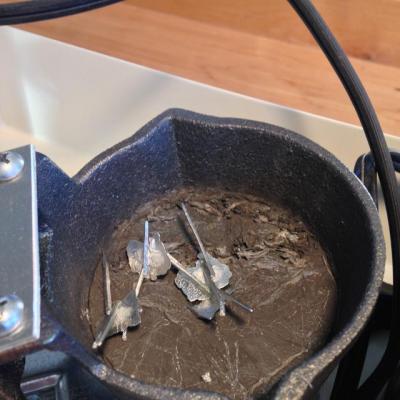
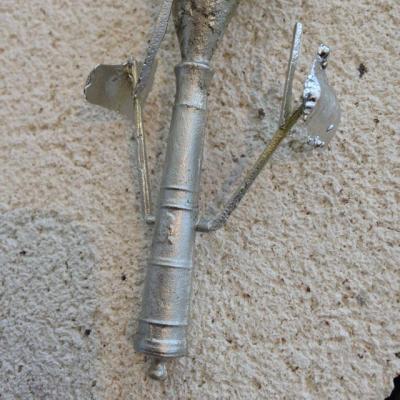
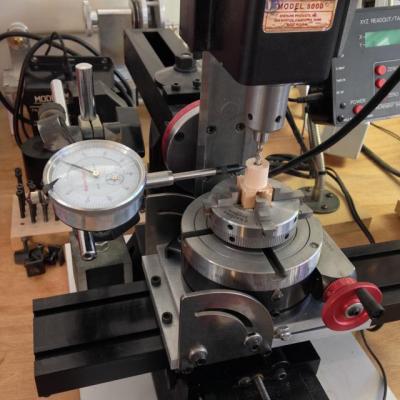
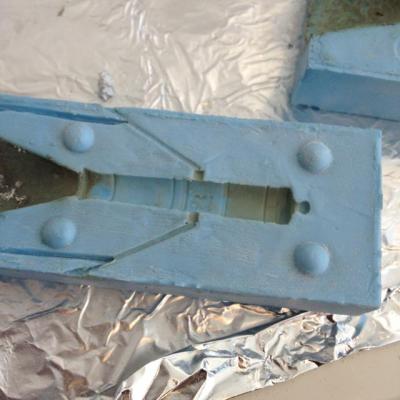
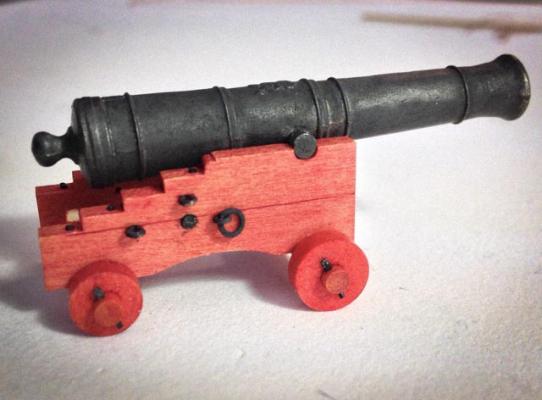
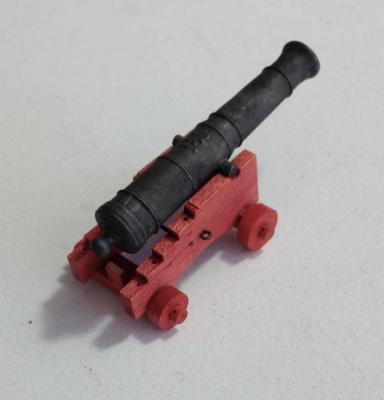
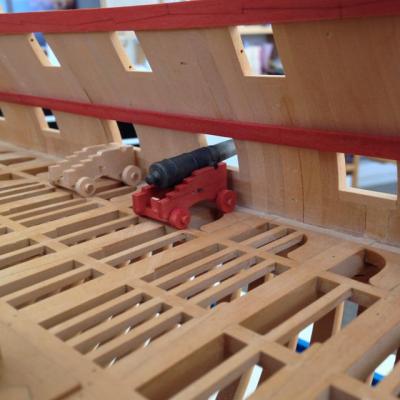

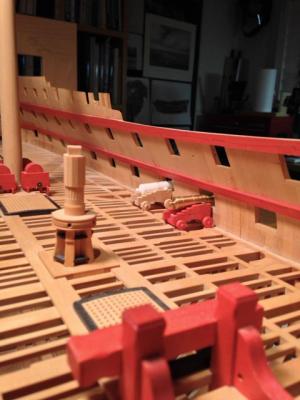
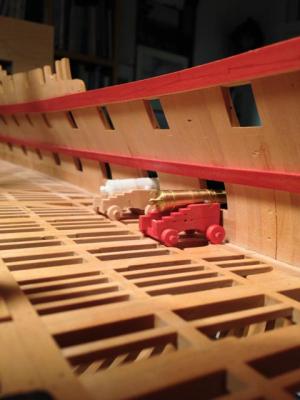
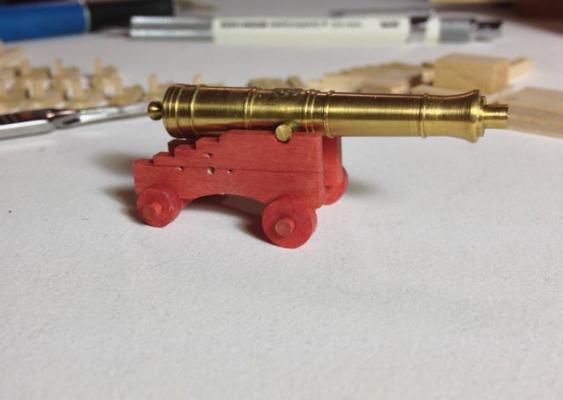
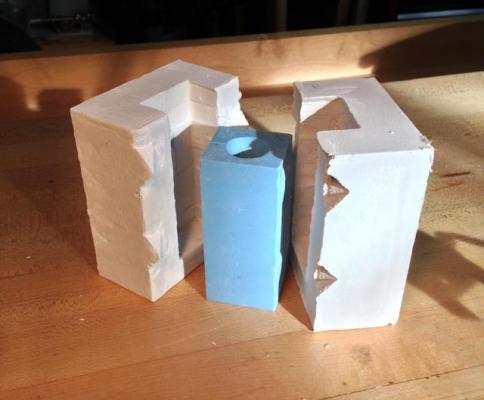
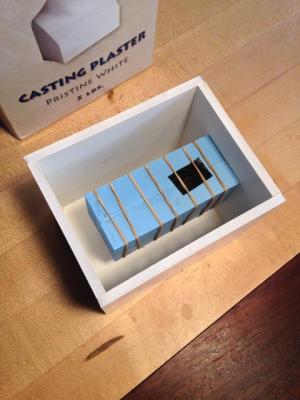
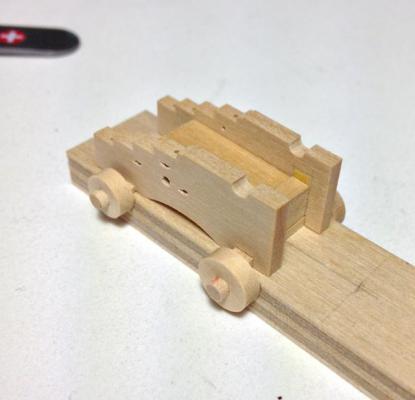
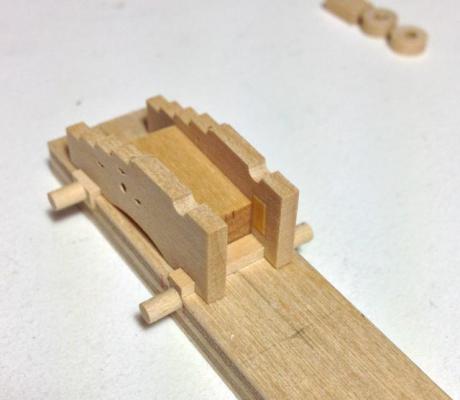
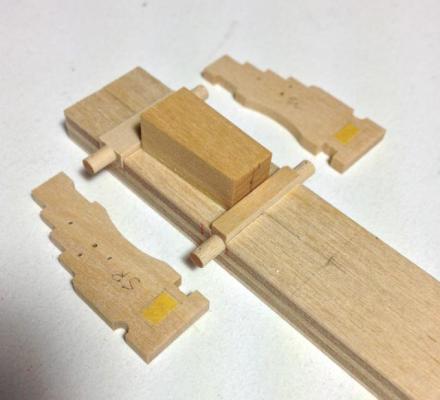
HMS Dragon 1760 by Siggi52 - FINISHED - Scale 1:48 - English 74-Gun ship
in - Build logs for subjects built 1751 - 1800
Posted
Beautiful work, Siggi. Those wine glasses are amazing. How did you turn them?
Mark